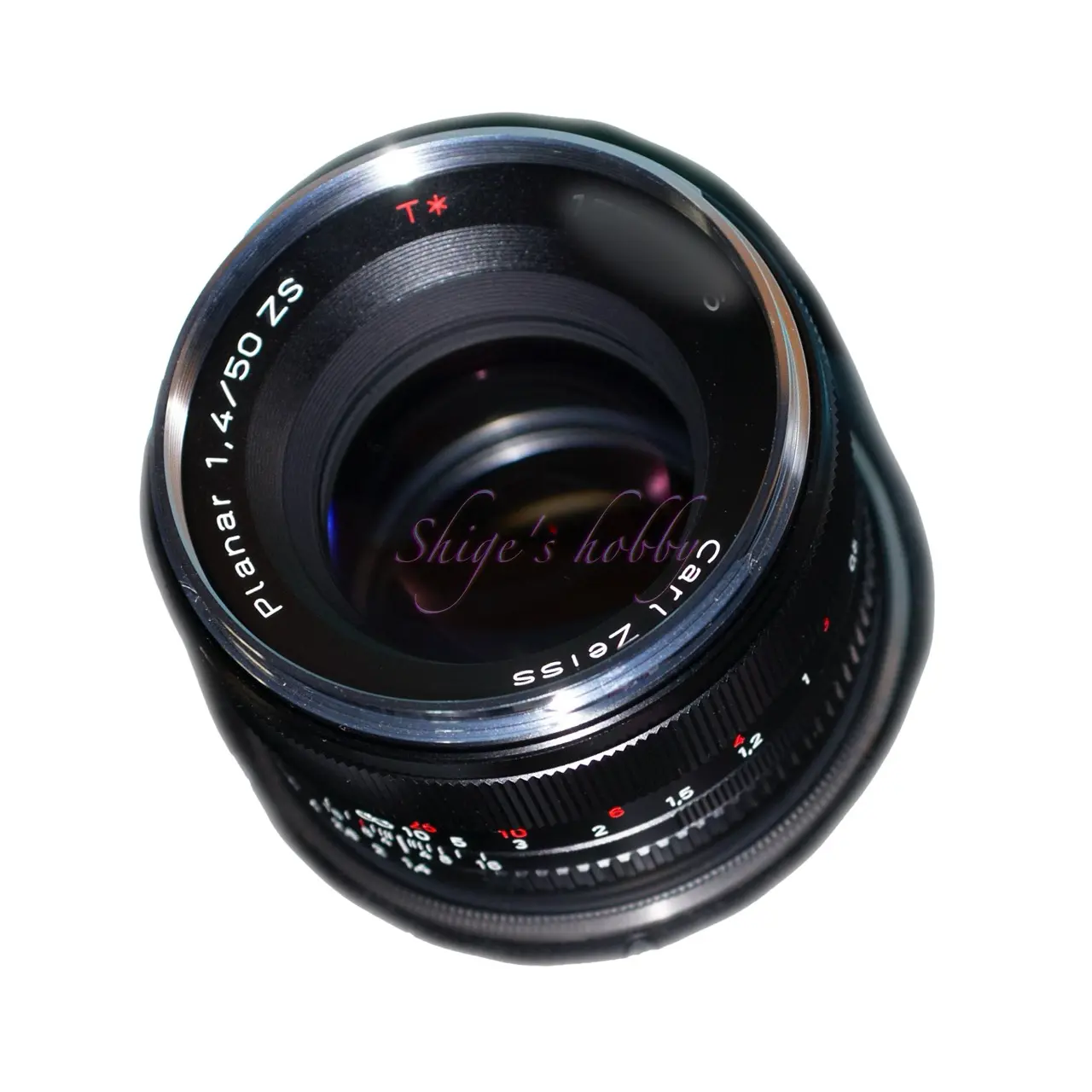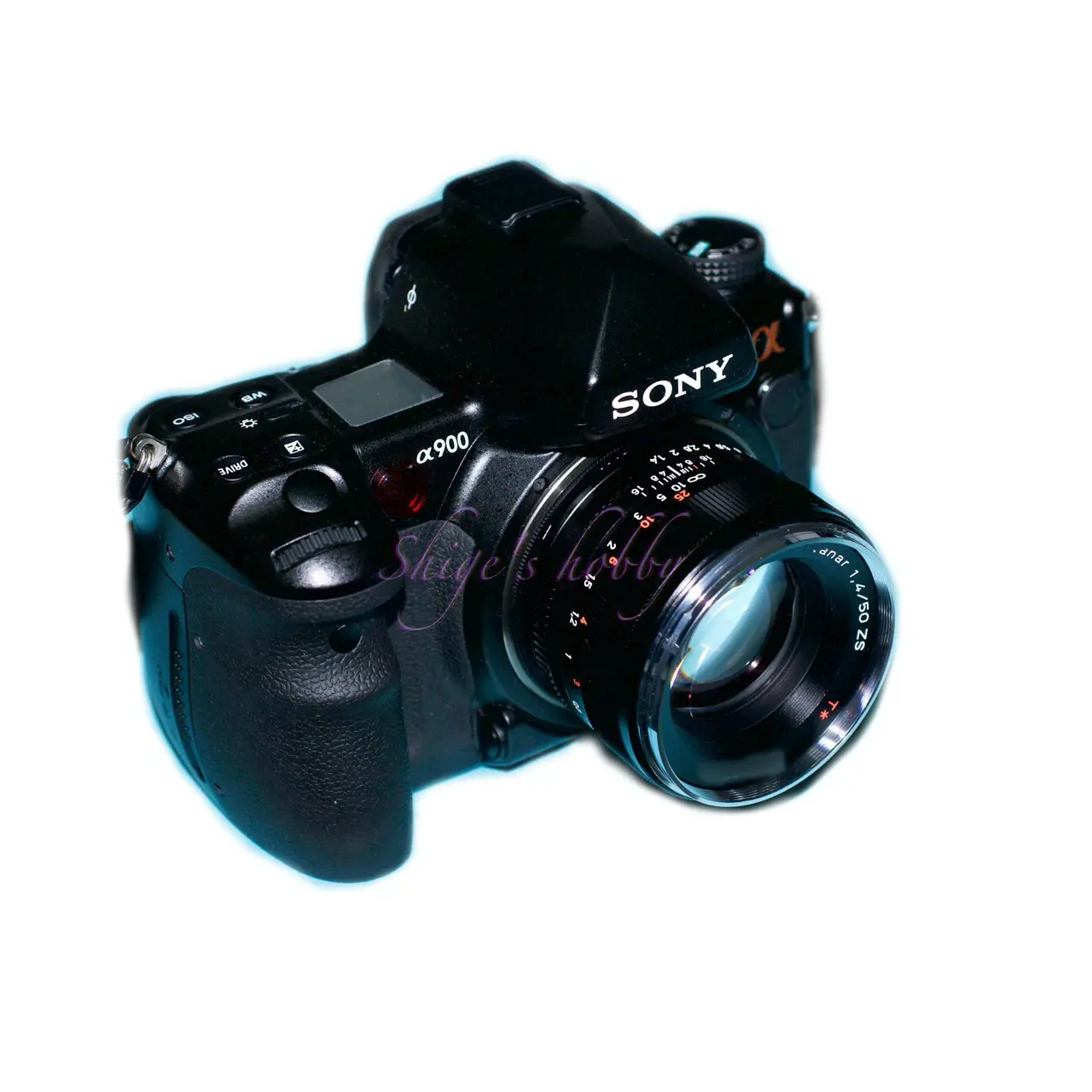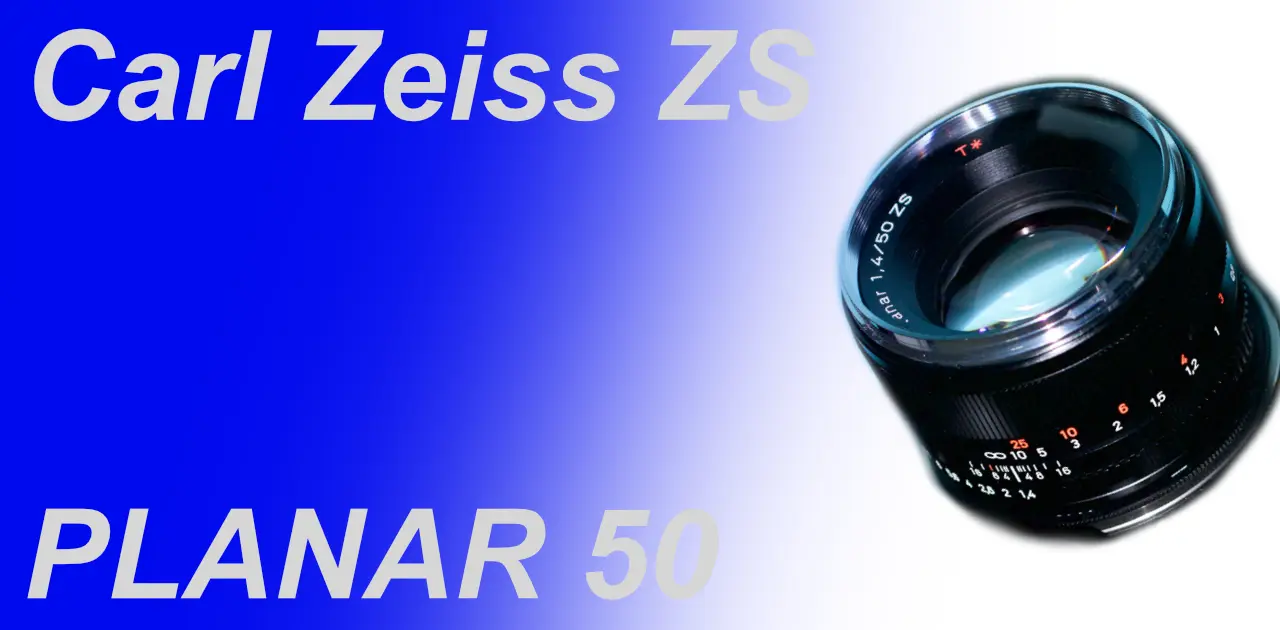Last updated on 2025-07-10
A review and photo examples of the Carl Zeiss 50mm f/1.4 ZS.
- Please see the disclaimer regarding advertising here.
- Italicized links in the text are advertisement links that take you to other sites.
Table of contents

Gallery
- The example photo was taken using a SONY α900
Review


1.Overview
The ZS (Y/C mount) was released, followed by the Canon EF and Pentax KA. As of 2024, it is still a long-lasting lens sold under the Carl Zeiss Classic brand.
The main specifications are as follows, and the details are listed in the table.
- Aperture: 1.4
- Lens configuration: 6 groups, 7 elements
- Aperture blades: 9 elements
- Minimum shooting distance: 0.45m
- Hood: Dedicated bayonet hood
- Lens color variations: Black
Looking at the lens configuration diagram, it is the same as the Yashica Contax mount Planar®T* f/1.4 – 50 mm, which was released in 1975 during the Kyocera Contax era.
Note that the only Yashica Contax (Y/C) mount adapter for SLR cameras is the CANON-EF (EOS) mount.
Yashica Contax (Y/C) mount adapters for mirrorless cameras are available in abundance from many manufacturers.
When Kyocera/CONTAX used the Zeiss camera trademark, there were only lenses for the Y/C (Yashica/Contax) mount, but the new Zeiss SLR lenses supervised by Zeiss itself include the ZS for M42 mount, the ZF for Nikon F mount, and the ZK for Pentax K mount. A little later, the ZE for Canon EF mount, equipped with an IC chip and electronic contacts for lens identification, was added, and the NIKON-F mount also evolved into the ZF.2 equipped with an IC chip.
Cosina handles its own brand of Voigtlander SL series and two Carl Zeiss lenses.
2.Usage
I purchased the Carl Zeiss Planar 50mm F1.4 ZS for use with the 35mm full-frame digital SLR camera, the SONY α900 (A900).
At the time of purchase, this lens was available in ZS (M42 mount) and ZF (Nikon F) mounts.
I purchased the ZS lens because I already had an α-M42 mount adapter for the α900, so I could use it by purchasing only the lens. Due to the mount specifications, there is no NIKON-F mount adapter for MINOLTA and SONY α. As an exception, there is a mount adapter that incorporates a correction lens, but I do not recommend it as it may degrade image quality.
The α900’s viewfinder makes it easy to focus at F1.4, so I often used it at full aperture. There is some image distortion in the four corners at full aperture, but this improves if you narrow the aperture to around F4.
The viewfinder of a single-lens reflex camera allows you to see the light coming from the lens as it is, and the view seen through the viewfinder of the highly acclaimed α900 with the Planar 50mm offers a clear and sharp field of view.
Looking at the results of shooting with the α900’s 24.2 megapixel 35mm full-frame sensor, the foreground and background bokeh are both natural, and the resolution at the focal point is high, showing sufficient performance.
At the time of purchase, it was the latest MF lens, and since it was a new purchase, the focus ring rotated smoothly and with just the right amount of torque, making focusing easy.
The focus ring rotates about 180 degrees from infinity to the minimum shooting distance of 0.45m, so there is a fair amount of rotation. However, there are almost no situations where you need to move quickly from infinity to the minimum distance with this lens, so this should not be a problem.
The aperture ring is the type that is located at the base of the lens, which is common on SLR camera lenses, and it is thinner and has a smaller diameter than the focus ring, so there is almost no chance of it being operated incorrectly.
3.Summary
To sum up the Planar 50mm, the lens design follows the established classic 50mm F1.4 lens, so you can expect stable image quality in both film and digital.
And because it was manufactured recently, there is a sense of security that you don’t get with old lenses, such as improvements in manufacturing technology and coatings, so it is a good choice for photographers who don’t mind manual focus lenses.
In addition, it weighs only 330g, so it matches well with small mirrorless cameras and can be used as a casual snapshot lens.
Compared to the latest MILVUS 50mm, the lens construction feels old, but the latest 50mm F1.4 lens is heavy and long to correct aberrations and improve image quality, and the lens weight is more than twice as much and the lens length is about 20mm longer, making it less portable.
Another disadvantage of the latest lenses is their high price.
- The lens construction diagrams are quoted from each company’s materials, and the sizes have been adjusted by us, so they are not exact.
Specification
| Lens name | Planar 50mm | MILVUS 50mm |
| Max aperture | 50 | 50 |
| Min aperture | 1.4 | 1.4 |
| Leaf blade | 16 | 16 |
| Lens Construction | 9 | 9 |
| A spherical lens | 7 elements in 6 groups | 10 elements in 8 groups |
| Min distance(m) | none | exist |
| Lens length(mm) | 0.45 | 0.45 |
| Max diameter | 44 | 94 |
| Filter Size(mm) | 66 | 82.9 |
| Weight(g) | 58 | 67 |
| Lens hood | 330 | 875 |
| Lens mount | ZS / ZF / ZE / ZK | ZF2 /ZE |
| Release date | 2006.4.30 | 2016.2.18 |
| Price(Yen/No-tax) | ¥59,500 | ¥135,000 |
The ZS (M42) lens lineup included the Planar 50mm, as well as a 25mm and a 35mm lens, for a total of three lenses.
The lenses for SLR cameras were released in 2006, one year earlier than the lenses for rangefinder cameras.
| Lens name | Distagon 25mm | Distagon 35mm |
| Max aperture | 25 | 35 |
| Min aperture | 2.8 | 2 |
| Leaf blade | 22 | 22 |
| Lens Construction | 9 | 9 |
| A spherical lens | 10 elements in 8 groups | 8 elements in 6 groups |
| Min distance(m) | none | none |
| Lens length(mm) | 0.17 | 0.3 |
| Max diameter | 66 | 73 |
| Filter Size(mm) | 65 | 65 |
| Weight(g) | 58 | 58 |
| Lens hood | 460(ZF) | 510(ZF) |
| Lens mount | ZS / ZF / ZE / ZK | ZS / ZF / ZE / ZK |
| Release date | 2010.2.11 | 2010.2.11 |
| Price(Yen/No-tax) | -89,500 | -89,500 |
Reference links
Update history
- 2025.4.10
- 2024.8.13
- 2024.04.01:update
- 2023.10.06:First draft
Affiliate Link
- Please see the disclaimer regarding advertising here.
- Italicized links in the text are advertisement links that take you to other sites.

Amazon Prime Sale


Be First to Comment